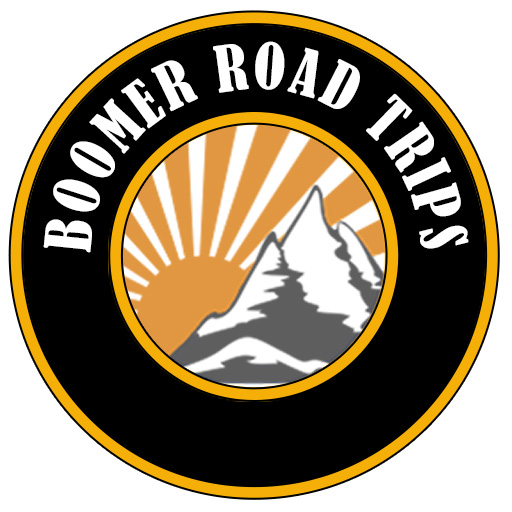
The Ariston Café on Route 66 in Litchfield, Illinois: A Timeless Landmark of America’s Highway

A Legacy Built on the Mother Road
Address: 413 Old Route 66 North, Litchfield, IL
No Route 66 road trip through Illinois is complete without a stop at The Ariston Café, a beloved institution in Litchfield, Illinois. Known as one of the oldest restaurants on Route 66, the Ariston is more than a place to eat—it’s a nostalgic pilgrimage for travelers seeking a taste of Americana. Established in the early days of the Mother Road, the café has remained a cherished stop for locals and tourists alike, offering both hearty Midwestern meals and a history steeped in roadside tradition.
Aristo means “The Best or Finest” in Greek
The History of the Ariston Café on Route 66 in Litchfield, Illinois
Few establishments along historic Route 66 carry the legacy and endurance of the Ariston Café in Litchfield, Illinois. One of the oldest continuously operating restaurants on the Mother Road, the Ariston’s history is deeply interwoven with the rise of American automobile travel, the economic migration of immigrants, and the transformation of roadside culture in the 20th century.

Founding and Early Beginnings (1924–1929)
The story of the Ariston Café begins with Pete Adam, a Greek immigrant who arrived in the United States in the early 20th century. Like many immigrants of his era, Adam brought with him a strong work ethic, a deep sense of hospitality, and a dream of building something lasting.
In 1924, Pete Adam and his business partner, Tom Cokinos, opened the original Ariston Café in Carlinville, Illinois, on Illinois State Route 4—a primary north-south artery that was soon to be absorbed into the newly planned U.S. Route 66. The name “Ariston” derives from the Greek word “aristos,” meaning “the best.”
The café quickly became a popular local eatery, known for its generous portions, friendly service, and home-cooked fare. As traffic increased along Route 66, Adam recognized the need to be closer to the highway’s evolving alignment.
Relocation to Litchfield and Route 66 Connection (1929–1935)
In 1926, Route 66 was officially commissioned as a national highway connecting Chicago to Los Angeles. Shortly thereafter, the Route 66 alignment shifted away from Carlinville, prompting Adam to move his café north to Litchfield in 1929—a growing town more strategically located on the new highway.

Initially, the Ariston operated out of a rented building in Litchfield. Business boomed as Route 66 gained national fame as the “Main Street of America.” The café served weary travelers, truck drivers, vacationing families, and local residents alike. The influx of traffic along Route 66 fueled the need for a permanent and larger facility.
A Permanent Home: 413 Old Route 66 (1935–Present)
In 1935, Pete Adam constructed the current brick building at 413 Old Route 66 North in Litchfield. The structure, with its streamlined Art Deco touches and simple, functional design, reflected both the architectural style and the roadside practicality of the era.

The building was constructed with longevity in mind. Inside, the dining room featured wooden booths, white tablecloths, a long counter, and lighting that created a warm, inviting atmosphere. The kitchen was outfitted to handle high-volume service, with a focus on consistency and quality.
Unlike the stereotypical greasy spoon diners common along Route 66, the Ariston offered an experience that felt a bit more upscale—without losing its approachable small-town charm. This balance helped it build a loyal following that endured for generations.
Golden Age of Route 66 (1930s–1960s)

During the mid-20th century, Route 66 became the primary route for those heading west—whether fleeing the Dust Bowl in the 1930s, heading to war in the 1940s, or taking the Great American Road Trip in the postwar era. The Ariston Café served all of them.
Pete Adam and his family managed the café with a sense of pride and commitment to the community. The menu featured classic American comfort food with Mediterranean influences, reflecting the founder’s Greek roots. Patrons could count on hearty breakfasts, home-style dinners, and fresh-made desserts.
During World War II, the Ariston became a reliable eatery for servicemen and factory workers. In the post-war era, it catered to the booming travel and tourism culture, with buses and caravans routinely stopping to feed travelers from across the nation.
Surviving the Interstate Era (1970s–1990s)
Like many businesses on Route 66, the Ariston Café faced a serious challenge with the development of the Interstate Highway System. When Interstate 55 bypassed large sections of old Route 66 in Illinois, many roadside businesses folded.
But the Ariston adapted. Thanks to strong community support, a loyal customer base, and continued attention from Route 66 enthusiasts, the café remained open while many others disappeared. Its location remained accessible from the interstate, and its reputation as a Route 66 institution helped maintain steady business.
By the late 20th century, the Ariston Café was not just a restaurant—it was a cultural landmark. Travelers from around the world visited not just for a meal, but to be part of history.

Recognition and Preservation (2000s–Present)
In 2006, the Ariston Café was officially inducted into the Route 66 Association of Illinois Hall of Fame, recognizing its historical significance and contribution to Route 66 heritage. It was also added to the National Register of Historic Places as part of a preservation effort to honor key landmarks along the route.
The café has remained under family ownership for most of its history, maintaining the values Pete Adam instilled: great food, warm service, and a deep respect for tradition.

Today, the Ariston Café continues to operate much as it did in the past, with original design elements still visible and a menu that honors its roots. Travelers walk in to see memorabilia on the walls, neon signage outside, and a dining room that has changed little since the 1930s.

A Living Landmark of Route 66
The Ariston Café is more than just a restaurant—it’s a rare surviving piece of America’s highway history. As one of the oldest continuously operating restaurants on Route 66, it offers a tangible link to a time when the open road represented freedom, possibility, and the spirit of exploration.
For nearly a century, the Ariston has been welcoming travelers, feeding generations of locals, and preserving a slice of Route 66 history. It stands today not only as a business but as a symbol of the resilience and timeless appeal of the Mother Road.
Would you like a version of this formatted for a historical marker, museum brochure, or Route 66 heritage tour publication?
The Ariston Café Today
Today, the Ariston Café continues to welcome travelers from around the world. The building retains its original 1935 charm, with classic signage, vintage booths, and a cozy, timeless dining room that transports visitors back to the heyday of the American road trip.

While the décor is vintage, the menu is fresh and delicious. Guests can expect classic Midwestern dishes like hand-cut steaks, pork chops, fried chicken, broasted potatoes, and homemade desserts like bread pudding and coconut cream pie. The restaurant also offers Greek specialties in honor of its founder’s heritage.
The café is still family-run, preserving its small-town authenticity and old-school hospitality. It’s a must-stop on any Route 66 itinerary, offering the rare combination of great food and living history.
Visitor Tips:
- Location: 413 Old Route 66 North, Litchfield, IL
- Open Hours: Usually open for lunch and dinner (check ahead for current times)
- Nearby Attractions: Litchfield Museum and Route 66 Welcome Center, Sky View Drive-In, Lake Lou Yaeger
Why the Ariston Café Matters
The Ariston Café is not just a place to eat—it’s one of the few remaining links to the original spirit of Route 66. Where so many classic roadside diners have closed or been transformed, the Ariston endures as a place where travelers can connect to the past, share a meal, and experience the community and comfort that defined a generation of American road travel.
Whether you’re tracing the route from Chicago to Santa Monica or just exploring the Illinois stretch, dining at the Ariston is a rite of passage. It’s a reminder that Route 66 isn’t just a road—it’s a story, and the Ariston Café is one of its most cherished chapters.



















